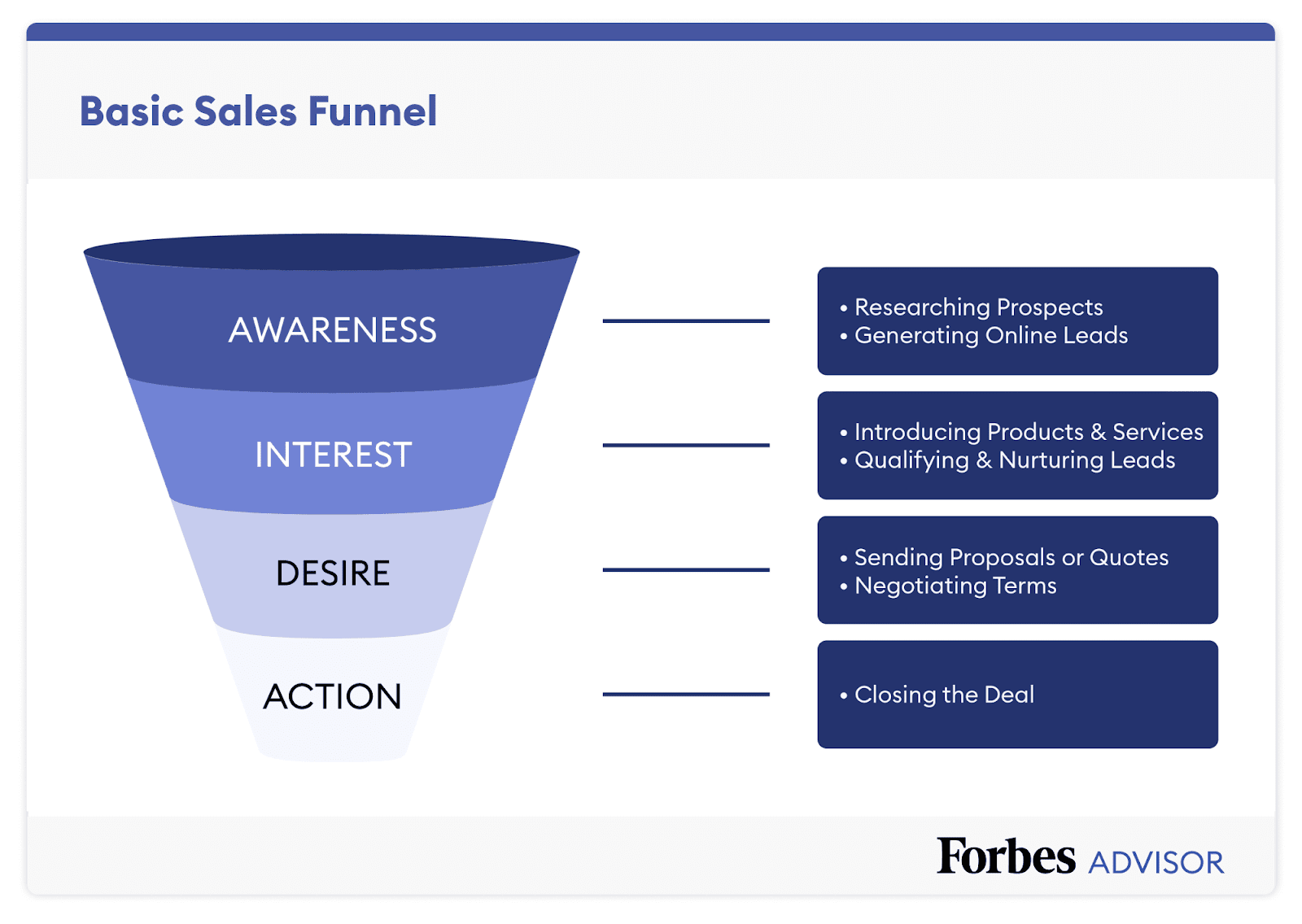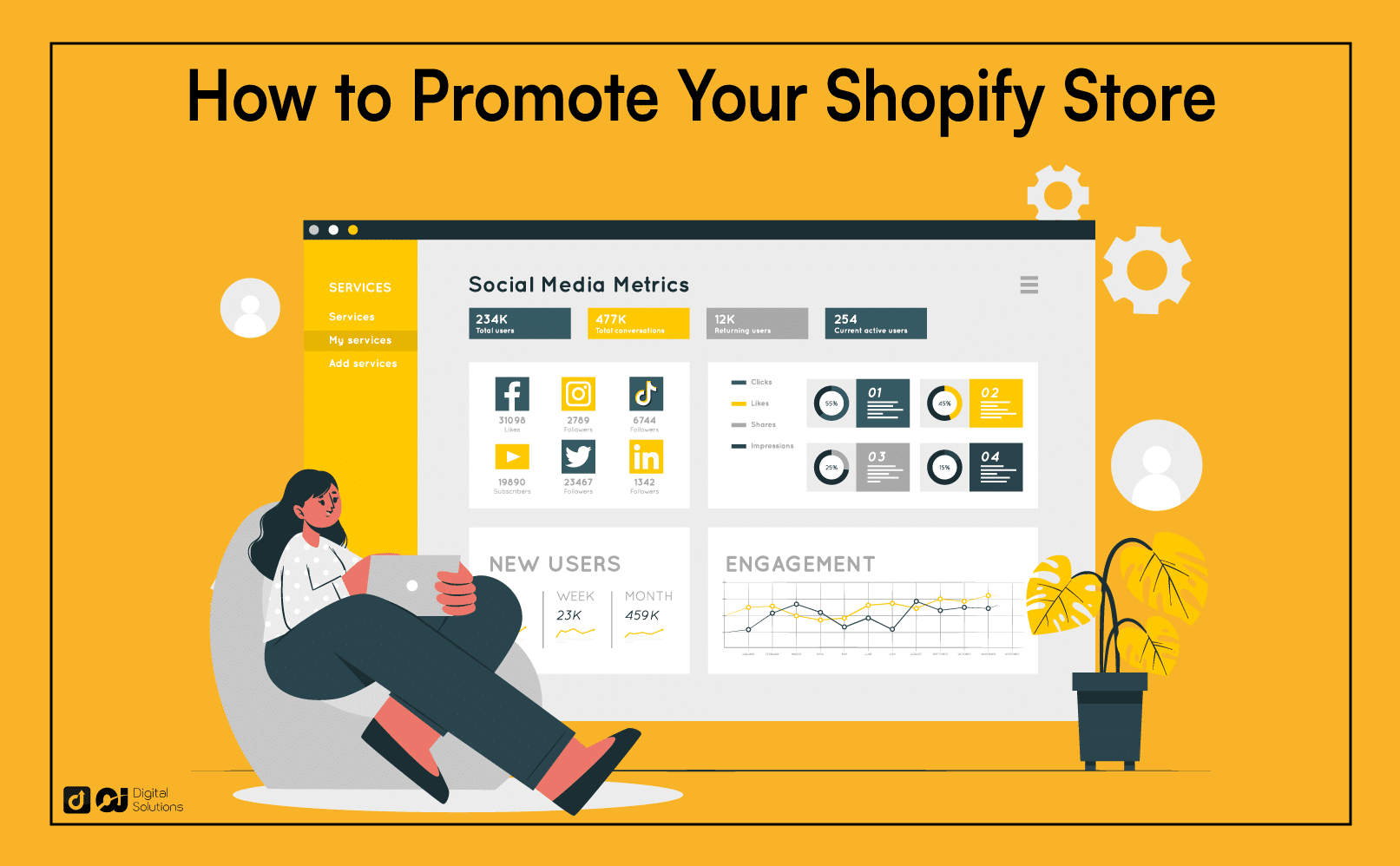Creating a fast, user-friendly, and well-designed Shopify site isn’t enough to become a successful online business.
You must also know how to promote Shopify store to drive traffic and convert visitors to customers.
If you don’t know how to start promoting your Shopify store, you’ve come to the right place.
As an ecommerce store owner with years of experience, I can teach you the best and most effective promotional strategies to reach your target audience and boost your sales.
Let’s begin.
How To Promote Shopify Store
Are you thinking of ways to promote your online store to potential customers? Use these marketing efforts to produce significant results.
1. Use Shopify Push Notifications.

One excellent way to reach potential customers and turn them into buyers is through push notifications like SMS and phone alerts.
Here are some announcements you can send with push notifications:
- New products
- Abandoned cart reminders
- Discounts and offers
- Contests
- Freebies
- New stock alerts
- Product bundles
- New blogs
- Social media content
Shopify has an extensive collection of apps you can use to send push notifications.
I recommend PushOwl Web Push Notification, which allows you to send messages to your target audience anytime.
PushOwl is free to install and has many marketing features, including user segmentation, abandoned cart reminders, innovative delivery, analytics, and more.
2. Create Shop Discounts.

Buyers love getting a good deal when shopping. Creating discounts and promos for your customers could help you convert traffic into more sales and promote your Shopify store to first-time buyers.
Discounts are also an effective way to increase repeat sales by offering exclusive deals to past buyers.
You can even get lurking visitors to take action and add that product to their checkout cart with limited-time discounts.
There are two ways to create a discount to promote your Shopify store.
Coupon Codes
You can create a discount coupon and offer it to your buyers. This route requires users to enter a discount code before checking out.
To offer discounts to your buyers, you’ll have to create discount codes on your Shopify store. To do that, follow these instructions.
- Head to your Shopify admin dashboard and click Discounts on the left sidebar.

- Click Create discount and choose the code you want people to enter to avail of the promo and the products eligible for that discount.
- Choose what type of discount you want to give. You can do a fixed amount discount or a percentage.
Compare Price Strategy
The second way is to create a discount and compare prices on your Shopify product. This option automatically awards the discounted rate to all customers who check out within the offer’s assigned period.
With the compare price approach, people can see your offer’s original and sale prices.
To set that, go to the product you want to change in your admin dashboard and head to the Pricing section.
Place the original price in the Compare at price field and the sale price in the Price field.
3. Create a Sales Funnel for Your Target Audience.

(Source: Forbes)
When learning how to market a Shopify store, you might have encountered the term “sales funnel.”
This marketing tactic involves offering something of value to a person and then sending multiple messages via email to convert them into customers.
Sales funnels work for high-ticket items. But they’re also great if you want to sell people subscription products like subscription coffee or access to an online community.
How to Create a Sales Funnel
To create a sales funnel, you’ll need a lead magnet, a free item that people can get in exchange for their email address, like a free e-book, guide, video training, or educational value.
You will then create a lead-capturing mechanism on your Shopify Store.
This system will take a person’s email and send them the lead magnet after opting in. Some great tools you can try for this are Leadpages or Clickfunnels.
Create a series of emails that will convince buyers to purchase your product. If you’re inexperienced in persuasive copywriting, hire a sales copywriter to create the email sequence.
4. Add Live Chat to Your Shopify Store.

Occasionally, you might have target customers with a few questions before they hit checkout on your products. In these instances, it helps to have live chat support on your Shopify store.
Shopify store owners often see live chat support as more of an after-sales channel. But it can also be a highly effective sales channel.
Setting Up Your Live Chat Apps
Use a tool like Zendesk or Gorgias. Many Shopify store owners opt to answer questions themselves to save money. But if you take this route, ensure you respond immediately.
If you can’t commit to answering live chat queries within an hour or less, hire a customer service representative to take inquiries on your Shopify store.
Assign store hours and communicate them on your chatbox and Shopify store so your future and existing customers know when to speak to a representative.
5. Add Product Reviews to Your Store.

Another effective way to promote your Shopify store is to leverage the power of social proof. The best way to do this is to add product reviews to your Shopify store, showing your target market that your brand is trustworthy.
66% of customers say that product reviews improve a brand’s trustworthiness. That means ecommerce website owners who don’t have product reviews on their Shopify store are leaving money on the table.
Use a Shopify app to gather and display product reviews. You can also use testimonials in your sales funnels, ads, and social media posts.
6. Run Google Ads to Your Online Store.

You can start with Google ads while learning how to advertise your Shopify store. Google has some of the highest traffic volumes.
When you target relevant keywords with your ads, you also get better conversions on clicks and visits. Be as specific when targeting keywords as possible so your ads appear in front of people with high intent to buy.
For example, instead of running Google ads for a keyword like “sweatshirts,” try targeting keywords like “sweatshirts for teens” or “vintage sweatshirts.”
7. Rank on Google With Search Engine Optimization (SEO).

Google ads aren’t the only way to appear on more Google search results. You can also optimize your Shopify store so you rank on search engines and increase brand awareness.
SEO helps you rank higher on relevant search results. This position puts you in front of more potential customers. Since 53% of all website traffic comes from a search engine, you want to avoid sleeping on SEO.
How To Optimize a Website for Search Engines
Perform keyword research to see which relevant keywords might help you rank higher on search results and drive more traffic to your site.
Don’t just target random keywords. Look for the ones with high buying intent.
Write a blog post with strategic keywords you want to rank for and add links to your products. Create guest blogs on other sites in your niche or expertise so you can get a strong backlink.
For example, if you own an apparel store, contribute content to fashion blogs around fashion trends and tips.
Performing SEO on a Shopify store effectively increases organic traffic, significantly raising your chances of selling more.
8. Maintain a Business Newsletter.

Email marketing is another powerful content marketing strategy in your business arsenal.
Businesses use email marketing campaigns to send announcements and offers to potential buyers and convert them into sales.
Creating a newsletter for your online store can be a great email marketing tactic. Newsletters keep the potential and existing customers engaged with your brand.
You can use Shopify’s internal email marketing system or integrate your shop with a tool like ActiveCampaign or Klaviyo. Maintain a list of your newsletter signups and create a regular send-out schedule.
Your newsletter should also have content that will interest people. Otherwise, they’ll ignore your emails or unsubscribe from your newsletter.
Here are some content ideas for your newsletters:
- Free resources
- A curated list of articles and blogs that your subscribers will enjoy
- Podcasts
- Your blogs and articles
- Case studies
You can also send email campaigns for holiday offers to your newsletter list. Examples are Black Friday sales, 4th of July promos, Christmas sales, and other seasonal promos.
Running holiday email campaigns encourages customers on your list to think of your store when they plan to do some holiday shopping online.
9. Create an Affiliate Program.

An affiliate or referral marketing program helps multiply your promotion efforts by getting other people to promote your products. You offer them a share of your revenue in exchange for their promotion.
Affiliate marketing leverages the power of word-of-mouth to get more customers. It’s an effective Shopify marketing idea if you have a strong network of influential friends or are willing to build one.
The best part about running a referral campaign is you only pay your referral users when they make a sale. That way, you have little to no fixed marketing costs, even if you don’t get results.
How To Set Up an Affiliate Program
You can use a tool like LeadDyno to manage your referral program. This tool will allow you to create affiliate links for your referral partners and track their commissions.
Assign a commission rate for your referral program. You can give one rate for all your referral partners or customize them.
Some great affiliate partners to invite to your referral program include:
- Bloggers
- YouTubers
- Social Media Influencers (I’ll discuss this in depth later on)
- Podcasters
- Anyone with a significant online following
While tapping into influencers for online marketing, don’t sleep on micro-influencers, too. They can also be excellent sources of referral traffic.
10. Work With Influencers.

(Source: Sprout Social)
Influencer marketing is one of the most widely used and effective marketing channels today. It’s no wonder why 93% of marketers have used influencer marketing.
With influencer marketing, you tap into the existing network of brand ambassadors and people with many followers on social media and marketing channels like YouTube, Instagram, Facebook, TikTok, and Twitter.
You can work with an influencer by paying them to run online marketing campaigns introducing your products to their audience. Alternatively, you can offer them an affiliate marketing offer.
If you’re targeting more in-demand influencers, you could also provide both.
When influencers promote your Shopify store, you tap into their credibility and influence.
That way, you don’t have to wait until you’ve built up your social media presence to meet your marketing objectives.
11. Create Organic Social Media Content.

(Source: Ben & Jerry’s Instagram page)
While working with influencers is excellent, you don’t want to rely solely on them. You’ll also need to create a social media following by producing organic content.
Organic social media marketing is a great option, especially if you want to learn how to promote a Shopify store for free. Some platforms and channels you can create to drive social media content include the following:
- Facebook page
- Facebook groups
You don’t have to be on all channels at once. You can start with one social media platform and slowly build up with time.
The key to growing your social media following is consistently creating engaging content, including:
- Facebook and Instagram feed posts
- Instagram Stories
- Facebook Stories
- Instagram Reels
- Facebook Reels
- YouTube Shorts
Promote your Shopify store by creating visually compelling graphics that promote your products on social media.
Turn user-generated content, like testimonials and reviews, into social media content to promote your store.
Remember to mix your promotional posts with value-giving posts like tips, best practices, and other relevant content.
You can also turn an educational blog post or two into smaller bite-sized social media pieces to drive traffic to your Shopify store.
12. Target Customers With Social Media Ads.

(Source: WebFX)
Running paid advertisements on social media channels can boost sales for ecommerce store owners.
Where Should I Run Ads on Social Media?
Some of the mainstream social platforms where Shopify stores should run ads include the following:
- TikTok
You don’t have to run paid ads on all these stores. You can start with one or two. Facebook ad campaigns are the most commonly used because of their effectiveness and ease of use.
Promote your Shopify store with different ad formats and see which drives the most return for your PPC ad spending.
If you’re running multiple online stores, split up your budget initially, then redirect more funding to the stores or products with the most return on ad spend.
Often, the cost of social media PPC ads can be higher than other forms of marketing. But when done well, you can get plenty of new customers for your Shopify store.
You can even create sustainable customer relationships through strategic retargeting campaigns. Use ads to upsell more high-tier products to existing customers or get repeat purchases.
13. Run an Online Contest.

(Source: GoMacro’s Instagram page)
Another great way to promote your Shopify store is to create an online contest, gamifying. Doing so gamifies the buying journey, creating a sense of community and fun for your target customer.
One good example of an online contest is a raffle for people who purchase products from your Shopify store within a certain period.
The winner can win prizes like cash, products, or anything your customers would appreciate.
14. Cross-promote With Other Store Owners.
Considering all other stores as your competition and refusing to work with them could limit your business.
For all you know, you can regularly drive a successful sale with a fellow business owner when you cross-promote each other’s products.
Let’s say you have a home decoration Shopify store. There are many opportunities to partner with other complementary stores, such as garden supplies, artwork, and workspace accessories stores, among other adjacent products.
Partnering with other stores could be a great way to tap into other business owners’ networks. You can build brand awareness within the same niche while forging win-win partnerships.
Here are some ways to cross-sell:
- Promoting each other’s products on different marketing channels
- Creating campaigns together and sharing the advertising costs
- Introducing each others’ stores to your newsletter subscribers through a few email campaigns
- Inviting each other as affiliates
15. Invest in Press Releases.

(Source: Heinz.com)
With the help of PR professionals and firms, you can get on other websites that could drive referral traffic to your Shopify store. Some external websites include online magazines, news channels, popular blogs, etc.
You’ll have to pay for press releases, but the recurring traffic could offset the cost.
Moreover, appearing in well-respected publications could also help improve your brand image.
You can contact publications directly to inquire about their ad spaces or work with a PR consultant to find suitable placements for you.
Don’t forget to request a link to your shop so that site readers can visit your Shopify store.
How Do I Promote My Shopify Store Without Social Media?
Regardless of your products, I recommend leveraging social media when promoting your Shopify store.
However, many of the strategies I provided don’t use social media.
Here are some examples:
- Use Shopify push notifications.
- Offer shop discounts.
- Add live chat to your Shopify store.
- Add product reviews to your product page.
- Optimize your Shopify store for search engines
- Run Google Ads campaigns.
- Run online contests.
- Use email marketing and launch an email newsletter.
- Cross-promote with other Shopify stores.
- Invest in press releases.
How Do I Advertise My Shopify Store for Free?
Many of my outlined promotional strategies will require a monetary investment that can be minimal or significant, depending on the specific strategy.
However, there are still ways to advertise your Shopify store without spending money.
Here are some examples:
1. Offer Shop Discounts.
Offering coupon codes or holding store-wide discounts doesn’t cost you anything except time. You only have to spend time implementing the coupon codes on your store or change your prices if you’re offering shop discounts.
2. Run Online Contests.
Running online contests won’t cost money unless the prizes for your contests are cash-based.
To avoid spending money, give away products already in your inventory or codes for hefty discounts (50% and above) as prizes instead of giving cash or money-based prizes.
3. Optimize Your Shopify Store for SEO.
A significant element of optimizing your Shopify store for SEO involves including the right keywords in specific areas of your product pages.
Here are some areas you must optimize for SEO:
- Product title (including title tags)
- Product description
- Product features and benefits (adding bullet points with keywords)
Keyword optimization shouldn’t cost money unless you use paid keyword research tools. However, there are free keyword tools, like Ahrefs, you can start with.
While free tools have more limited features than paid ones, they can still be helpful to ecommerce store owners like you, especially at the start of your selling journey.
The Bottom Line
There are more Shopify marketing strategies you can try, but these sales channels and tactics should give you more than enough ideas to test out.
You could start with two or three and already see tremendous results if you do them right!
However, promoting your Shopify store isn’t the only path to success. To increase your likelihood of success, you must also learn to sell on Shopify.



